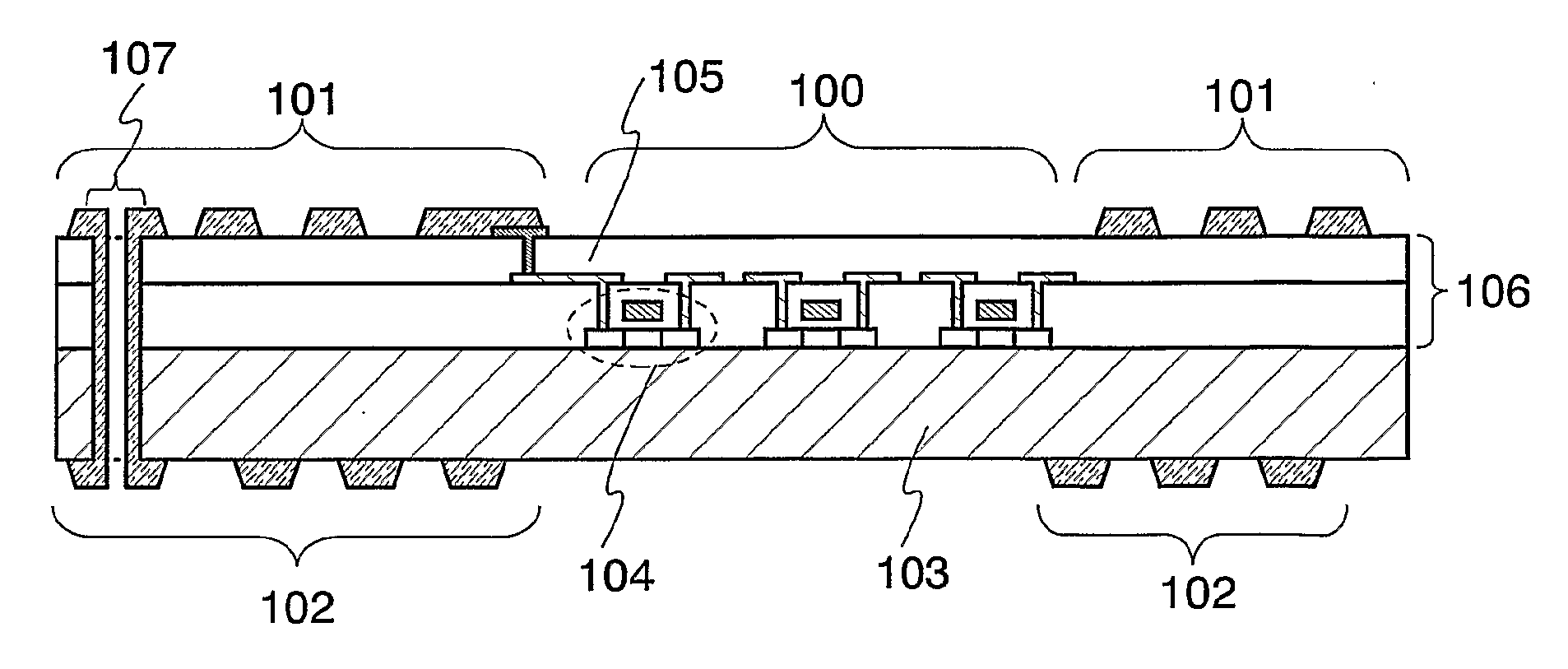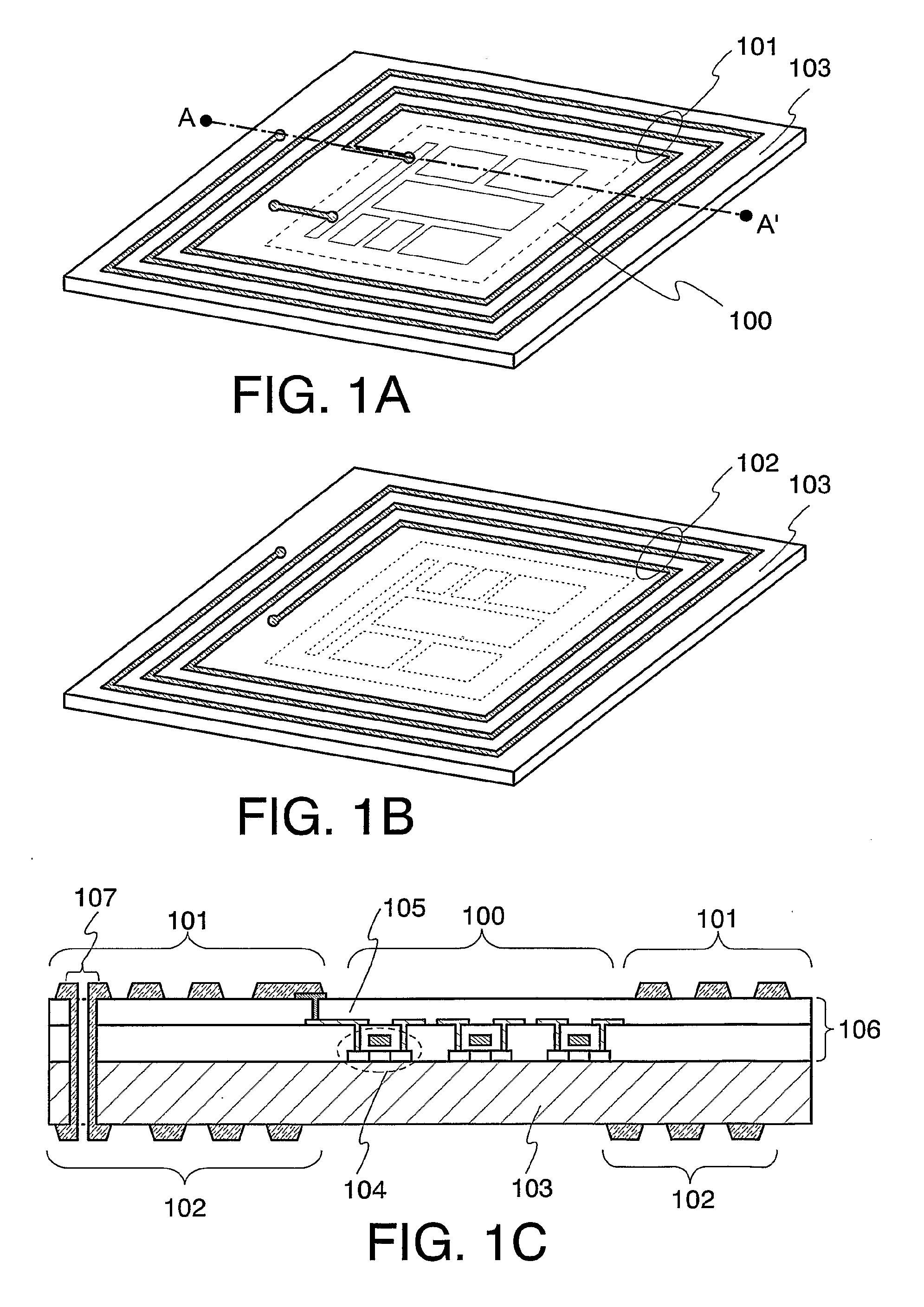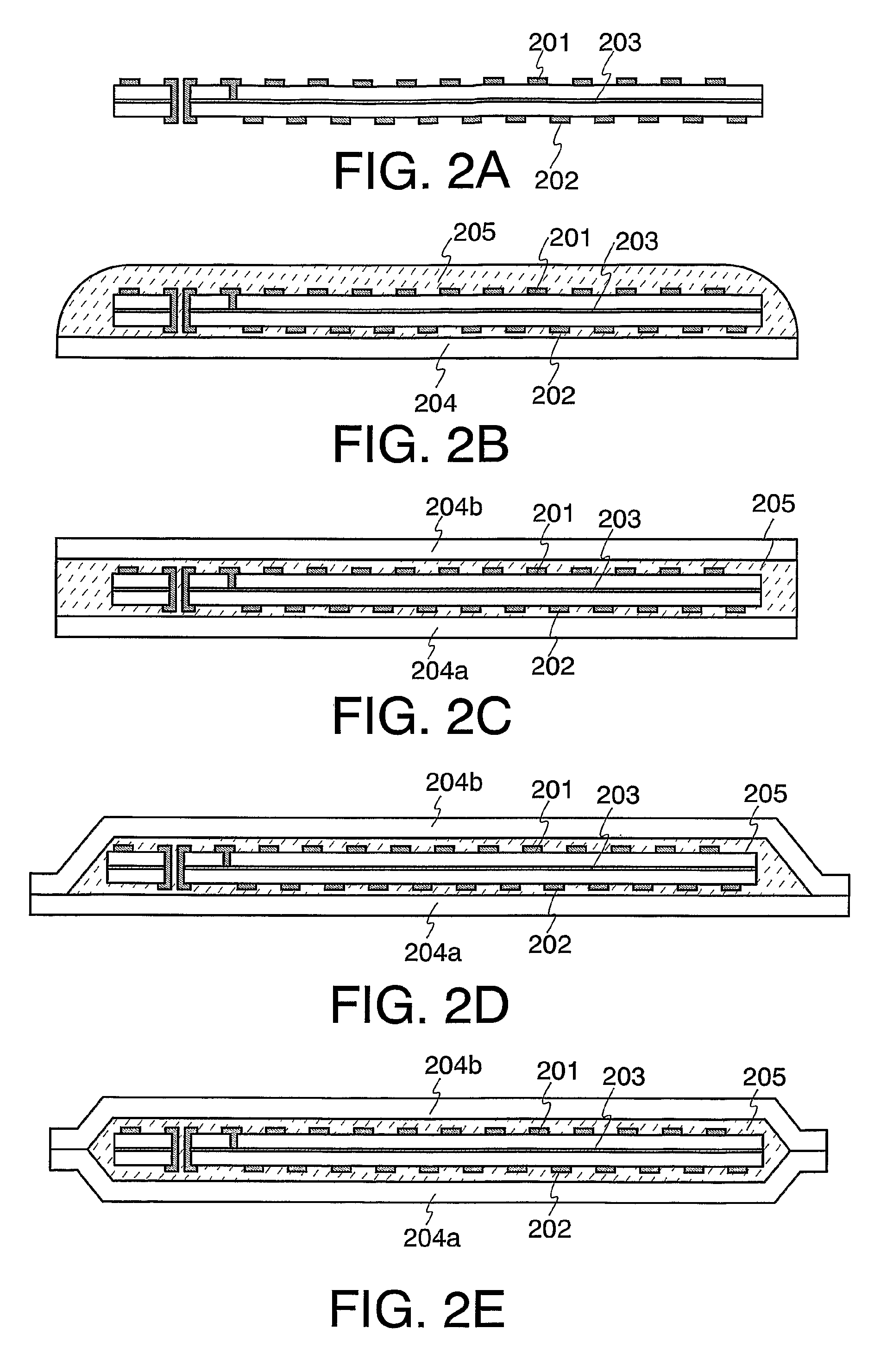Semiconductor device
a technology of semiconductor devices and semiconductors, applied in the structure of radiating elements, instruments, printing, etc., can solve the problems of low reliability, difficult to increase process yield, and easy to cause defects in connection portions, so as to reduce the size limit of an antenna, enhance gain, and reduce the effect of antenna siz
- Summary
- Abstract
- Description
- Claims
- Application Information
AI Technical Summary
Benefits of technology
Problems solved by technology
Method used
Image
Examples
embodiment 1
[0101] A specific method for manufacturing an ID chip of the present invention will be described. In this embodiment, a TFT is given as an example of a semiconductor element. However, the semiconductor element used in an integrated circuit is not limited thereto and various circuit elements can be used.
[0102] As shown in FIG. 10A, a separation layer 501 is formed over a first substrate 500 which is heat resistant. For example, a glass substrate such as a barium borosilicate glass or an alumino borosilicate glass, a quartz substrate, a ceramic substrate, or the like can be used for the first substrate 500. In addition, a metal substrate including a SUS substrate or a semiconductor substrate may be used. A substrate made from a flexible synthetic resin such as plastic generally tends to be less resistant to high temperature as compared with the above described substrates. However, such a substrate made from synthetic resin can be used as long as it can resist the processing temperatu...
embodiment 2
[0170] In this embodiment, a method for manufacturing plural ID chips with the use of a large substrate will be described.
[0171] A plurality of integrated circuits 401 are formed over a substrate 400. Thereafter, a contact hole 403 for connecting a first conducting wire 404 and a second conducting wire 405 to be formed later is formed. FIG. 16A shows a state where the plurality of integrated circuits 401 corresponding to each ID chip are formed over the substrate 400. FIG. 16B shows an enlarged view of an area enclosed by dashed lines 402 of FIG. 16A.
[0172] Next, a first conducting wire 404 is formed on a side where the integrated circuits 401 are formed, and a second conducting wire is formed on a side opposite to the side where the integrated circuits 401 are formed. FIG. 16C shows an enlarged view of an area enclosed by dashed lines 402 in FIG. 16A after forming the first conducting wire 404. As shown in FIG. 16C, the first conducting wire 404 is formed so as to overlap with th...
embodiment 4
[0191] When a semiconductor device such as an ID chip of the present invention is formed using a flexible substrate, the ID chip is suitable for being attached to an object having flexibility or a curved face. When a memory such as a ROM that cannot be rewritten is formed inside of an integrated circuit included in the ID chip of the present invention, forgery of the objects attached with the ID chip can be prevented. For example, the application of the ID chip of the present invention to foods, which their commodity values largely depend on production areas and producers, is advantageous for inhibiting mislabeling of the production areas and producers at a low cost.
[0192] Specifically, the ID chip of the present invention can be used as the ID chip attached to tags having information about objects such as luggage tags, price tags and name tags. Also, the ID chip of the present invention itself may be utilized such as tags. For example, the ID chip may be attached to certificates c...
PUM
 Login to View More
Login to View More Abstract
Description
Claims
Application Information
 Login to View More
Login to View More - R&D
- Intellectual Property
- Life Sciences
- Materials
- Tech Scout
- Unparalleled Data Quality
- Higher Quality Content
- 60% Fewer Hallucinations
Browse by: Latest US Patents, China's latest patents, Technical Efficacy Thesaurus, Application Domain, Technology Topic, Popular Technical Reports.
© 2025 PatSnap. All rights reserved.Legal|Privacy policy|Modern Slavery Act Transparency Statement|Sitemap|About US| Contact US: help@patsnap.com



